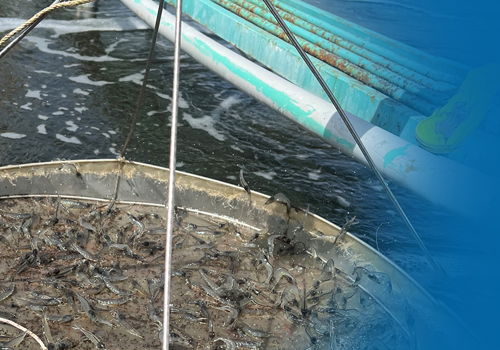
Before Post Larvae
Nurturing shrimp hatchlings through critical development stages
Micro-encapsulated feeds are key for successful weaning
Water quality management
Biosecurity management
FREQUENTLY ASKED QUESTIONS
Key questions in the before post larvae stage
Nauplii get their nutrients from their yolk sac. At Zoea, shrimp larvae start to feed with microalgae like Chaetoceros for L. vannamei and Skeletonema for P. monodon. Also others are being used such as Tetraselmis and Thalassiosira. At the end of the Zoea stage and during Mysis, artemia is added alongside microalgae. The shrimp larvae should be gradually weaned on to formulated diets (Dry- microencapsulated feeds; size +/- 50-100 µm) to prepare for post-larvae stage.
Read more about the hatchery stageMicroalgae culture is done at the hatchery by a technician specialized in the culture of different microalgae. Clean, closed conditions are required to ensure no contamination takes place. During the scaling up from culturing in a flask to a larger bioreactor, ensure sterile conditions to stop you from culturing the wrong micro-organisms. Artemia is mostly bought freeze-dried or frozen and stored under cool conditions until required. The required amount is hatched under specific conditions during 24 hours. Artemia are fed live to the shrimp larvae.
Contact our hatchery specialist for more information